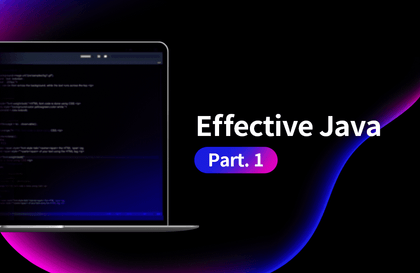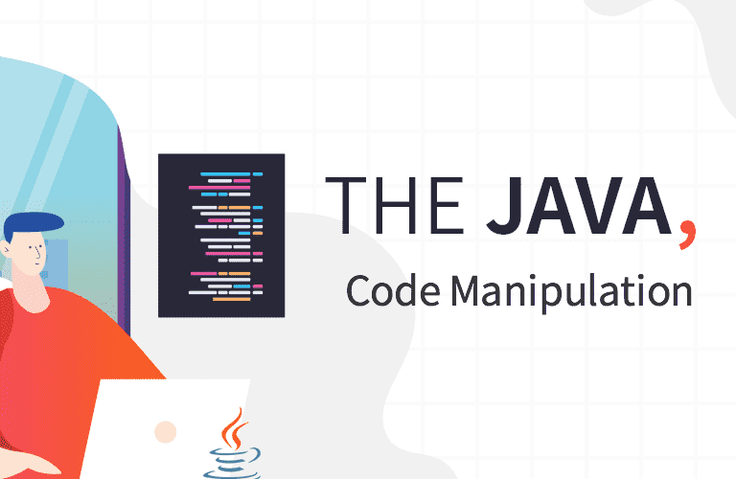
이펙티브 자바 완벽 공략 1부
백기선
자바 학습의 끝판왕 “이펙티브 자바”를 보다 쉽고 완벽하게 학습하세요. 이 강의를 수강하시면 여러분의 자바 프로그래밍 지식과 실력뿐 아니라 학습 능력 또한 향상 시킬 수 있습니다.
중급이상
Java
Have you ever wondered "how" the many Java libraries and frameworks you use provide this functionality? In this course, learn how to manipulate various codes or objects provided by Java and take your Java skills to the next level.

You can understand the JVM structure.
Learn what bytecode manipulation is and how you can use it.
Learn what reflection is and how you can use it.
Learn what a proxy is and how you can use it.
Learn what annotation processors are and how you can use them.

This course covers the underlying Java technologies that Java developers have likely used or heard of at least once, such as Spring, Spring Data JPA, Hibernate, and Lombok.
How does Spring retrieve and inject objects of the type of fields or parameters annotated with @Autowired? How does Lombok generate getters, setters, hashCode, equals, and other methods when annotated with @Data? Have you ever wondered?
This course covers the technologies Java provides, including source code, bytecode, and object manipulation. To understand this, it's helpful to first understand the fundamental structure of the JVM and how classloaders work. Therefore, this course covers the JVM, bytecode manipulation, reflection, dynamic proxying, and annotation processing. Therefore, this course is recommended for those who have been unsure what to learn after learning the basics of Java.
After completing this course, you will gain a deeper understanding of Java and will be able to more easily understand the various technologies surrounding it. Furthermore, I hope that the skills you learn in this course will spark your interest in broader Java technologies, such as GC, service providers, and profilers.
thank you

Who is this course right for?
Students or developers who want to learn or develop libraries or frameworks that manipulate code or objects.
Students or developers who want to understand and use Java in a little more depth.
Students or developers who want to learn how Lombok, QueryDSL, code corruption tools, and various functions provided by Spring (DI, AOP) are implemented.
Need to know before starting?
Understanding of Java's basic syntax (classes, fields, methods, generics, compilation, access modifiers, etc.)
92,659
Learners
4,270
Reviews
2,010
Answers
4.8
Rating
20
Courses
네이버와 아마존을 거쳐 현재 Microsoft에서 시니어 소프트웨어 엔지니어로 일하고 있습니다.
아인슈타인은 "교육이란 사실을 가르치는 것이 아니라, 생각할 수 있는 힘을 기르는 것이다."라고 말했습니다. 그리고 저도 그 말에 깊이 공감하며 강의를 만들고 있습니다.
유튜브: '백기선' 채널에서 개발자 고민 상담 및 개발자에게 유용한 지식 공유
번역: 스프링 및 하이버네이트 관련 서적 다수 번역
저술: 쉽게 따라하는 자바 웹 개발
All
24 lectures ∙ (4hr 36min)
Course Materials:
All
324 reviews
4.9
324 reviews
Reviews 3
∙
Average Rating 4.7
Reviews 3
∙
Average Rating 5.0
5
사실 스프링 DI, AOP, IOC등 개념들이나 JVM의 구조에 대해서 이런저런 블로그 글들을 봐도 명확하게 이해안가는 경우가 너무 많았어요. 해당 기술들의 원리를 이해하지 못하니 당연히 기술을 그냥 외우는 수준에 불과하고 그마저도 시간이 지나면 까먹어서 뭐였더라? 하게 되더라구요. 이직을 준비하는 과정에서 이 강의를 보게 되었고, 제가 무심코 쓰고있던 기술들의 원리를 이해하게 되니 조금 더 속시원히 이해가 되는 느낌이 들었습니다. 같은 강의를 몇번 조금 더 들으면 또 더 깊게 나름대로 생각하고 어떤글을 읽어도 조금 더 깊게 이해가 될 것 같아요. 또 휘발성으로 사라질지 모를 지식들이지만, 그래도 어떤 원리로 된다 안된다를 아는거랑은 다르다고 생각해서, 정말 저한테는 의미있는 강의였습니다.
제가 이 강의를 만든 의도대로 학습 효과를 얻으신 것 같아서 정말 기쁘네요. 앞으로도 좋은 강의 많이 만들겠습니다. 감사합니다.
Reviews 11
∙
Average Rating 5.0
Reviews 16
∙
Average Rating 5.0
$38.50
Check out other courses by the instructor!
Explore other courses in the same field!